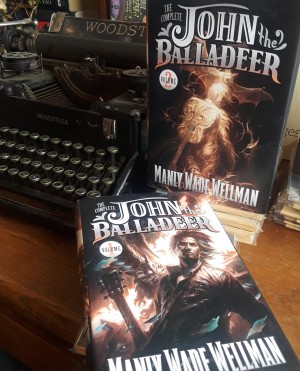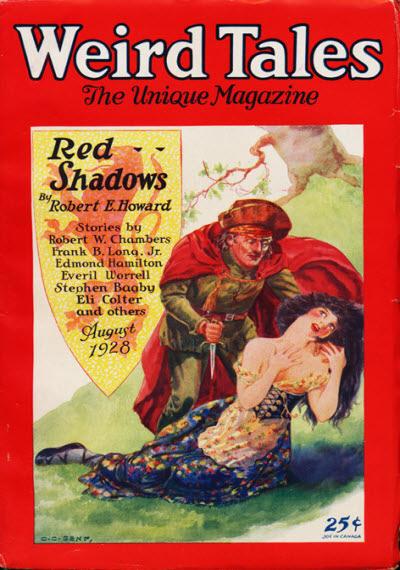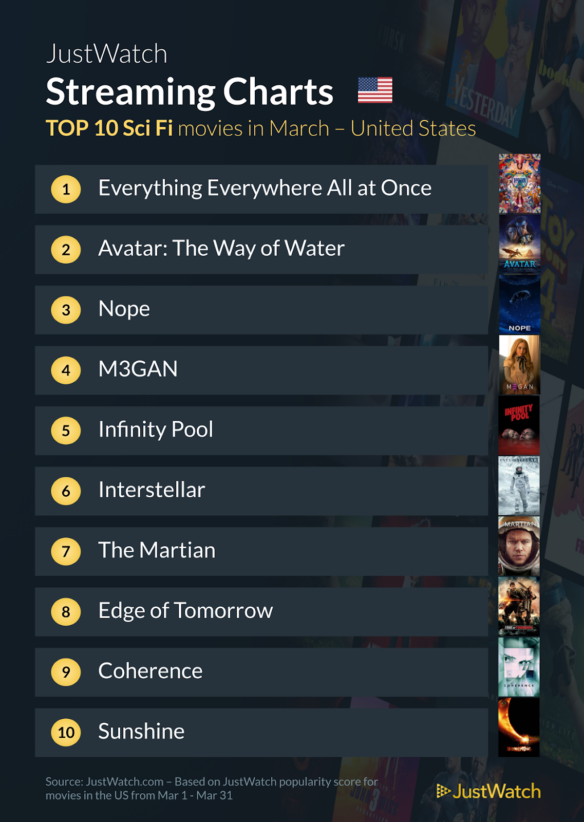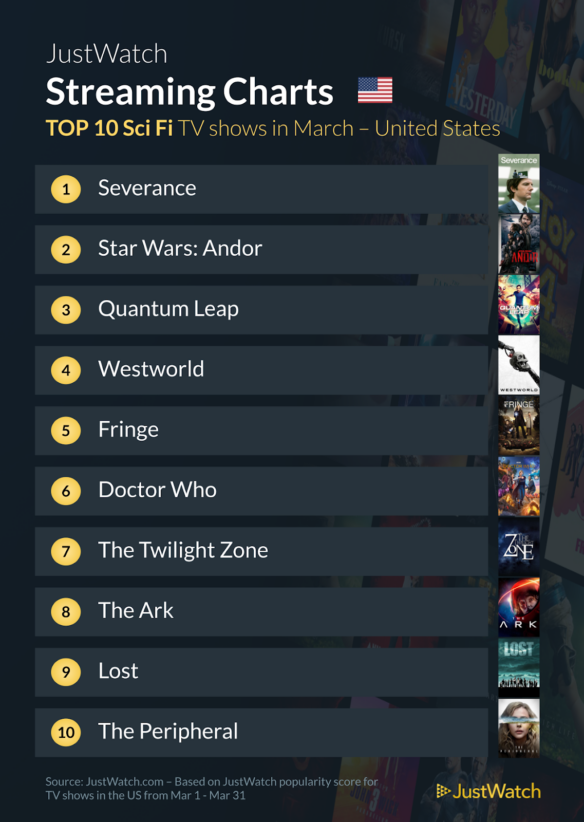(1) ANTICI-PATION! Muse from the Orb bids a “Happy Thanksgiving to Solomon Kane, the World’s Most Unhinged Puritan”.
As a teenager, Robert E. Howard came up with the idea for a 16th-century swordsman. He wanted to write a hero of the “cold, steely-nerved duelist” archetype, and perhaps was influenced by the thrilling pirate histories that he was reading at the time.¹
This hero would take years to gestate in Howard’s mind; in 1927, when a twenty-one-year-old Howard finally wrote him down, he had taken the form of a Puritan in black clothes with ice-blue eyes. Solomon Kane would appear in 7 published stories from 1928-1932, and over the course of his pulp fiction wanderings would kill an untold number of evildoers, totaling somewhere in the thousands.
Kane was introduced to the world in “Red Shadows,” the cover story of Weird Tales August 1928. “Red Shadows” has one of the best cold opens of any pulp story; its introductory vignette, a chapter called “The Coming of Solomon,” clocks in at 378 words yet contains shock after shock, escalation after escalation. Howard gives us outlines of our hero in a series of evocative, sparse details: a “long, slim rapier,” a “somber brow,” a “soothing” voice that belies his austere appearance. At the introduction’s close, Kane utters a vengeful line so hard you’d have to be flatlining on a gurney to stop reading….
(2) IMAGINARY PAPERS. Arizona State University’s Center for Science and the Imagination has published Imaginary Papers, Issue 20, their quarterly newsletter on science fiction worldbuilding, futures thinking, and imagination. In the issue, Leah Newsom writes about a series of videos on TikTok that reimagine the wild, wild West, Samuel Clamons discusses Greg Egan’s novel Diaspora and its cryptographic utopias, and Andrew Dana Hudson describes a speculative fiction project on the future of renewable energy in northern Sweden.
Leah Newsom’s entry, Science Fiction Frames, introduces a new vision of the West.
…Cutting to a third character, we meet the Dirt Man. A black pleather cowboy hat adorns his head. He’s wearing a denim jacket with a mock collar zipped to the top. Staring directly into the camera, his grimace is both menacing and embarrassed.
The video garnered over 19 million views in the summer of 2024 and lifted Vail’s TikTok account to the top of fyps (“for you pages”) around the world. Presumably as a promotional campaign for the release of his album 100 Cowboys, Vail continued to post TikTok gold and dominate Gen Z social media for months. The cowboy one. The horse one. The that-bear’s-gonna-fuck-you-up one. A video about “the great aquatic uprising of ‘22,” which recounts a revolution against the human race helmed by fish of all kinds.
All of these videos feature the same spaghetti-western aesthetics: surreal roving Sonoran highways and cowboy hats, denim and finger guns. Even the way Vail stands, shoulders forward, thumb tucked into the front of his belt, is entrenched in the tropes of the wild, wild West. Through absurd tales of dirt men and half-people-half-cows, Vail is reimagining the construction of “the frontier.”…
(3) IRISH CRIME. The An Post Irish Book Awards Winners 2024 have been announced, in which we follow the crime fiction category:
Irish Independent Crime Fiction Book of the Year
- A Stranger in the Family by Jane Casey (Hemlock Press)

(4) BRING ‘EM BACK ALIVE. Slashfilm is prepared to name “The 5 Best Sci-Fi Movies Where Nobody Dies”.
…While mortal danger is an easy way to create stakes and showing people die is the easiest way to establish danger, there are plenty of methods of making a sci-fi project interesting without killing off half the cast. This doesn’t mean that the space Marines have to put down their laser rifles and settle their differences with the alien invaders over a game of Canasta, either. Many sci-fi films have found ways to provide thrills without any fatalities — and without sacrificing any intrigue. Here are some of the finest examples of great sci-fi movies where nobody dies….
Exhibit A is –
The Martian
“The Martian” is one of the surprisingly high number of space-themed installments in the long-running, unofficial movie series about expensive missions to save Matt Damon. Here, Damon plays Mark Watney, an astronaut on an expedition to Mars who’s left behind on the red planet during an emergency evacuation. He now has to figure out how to survive and maintain sanity while stranded on a planet that can’t support human life, with barely any hope of getting out alive.
That struggle and the climactic rescue attempt essentially constitute the entire movie. While getting Watney back home is a risky operation for everyone involved, the story really hinges on the life of a single man. The fact that “The Martian” is on this list is a pretty good indication of how things play out — and with its $108 million production budget, it’s definitely on the more expensive and epic side of sci-fi movies where absolutely nobody dies.
(5) TALKING ABOUT BRADBURY. [Item by Dann.] Last month, author Paul Hale released a series of Cinema Story Origins Podcast episodes covering The Halloween Tree. In the episodes, Paul compares and contrasts the classic Ray Bradbury story with the 1990s era movie-script written by Ray as well. Paul also provides some additional history about the book and movie.
Here are the links to the three-episode series.
- CSO 017a The Halloween Tree Part 1
- CSO 017b – The Halloween Tree Part 2
- CSO 017c – The Halloween Tree Part 3

(6) MEMORY LANE.
[Written by Cat Eldridge.]
Anniversary: Star Trek: The Next Generation’s “Haven” (1987)
Stop this petty bickering, all of you! Especially you, Mother! — Deanna Troi
Could you please continue the petty bickering? I find it most intriguing. — Data
So let’s talk about the First Lady of Star Trek and her final role which begins in Star Trek: The Next Generation‘s “Haven”, broadcast thirty-seven years ago this weekend in syndication.
It would introduce us to the magnificent and yes more than occasionally overbearing presence of Lwaxana Troi, mother of Ship’s Counsellor Deanna Troi. Not that they overused her as she only appeared about once per season for the rest of the run. It just seemed she was there more often.
RED ALERT, I MEAN, SPOILER ALERT. REALLY I DO MEAN IT. GO DRINK SOME RIGELLIAN BRANDY LIKE GUL MARAK FAVORS.
Deanna’s been summoned by her mother to get married as she was betrothed to a human when she was just a wee Betazoid. Now we know that won’t happen, but oh it’s so delicious to watch why. It doesn’t go off in the end.
Meanwhile Lwaxana, being ever so on the prowl, has set her sights on seducing Jean-Luc, who is appalled by the idea to say the very least. Not as we’ve seen that he doesn’t mind a great romp. Just not with her. Isn’t there a mud bath scene with her, Worf and others later on in the series?
Meanwhile a race long extinct is engaged in hostile action against Haven. Or his Picard says, “Captain’s log, supplemental. It has been believed the Tarellian race was extinct, an assumption contradicted now by the sight of one of their vessels approaching Haven.”
That ship is carrying a deadly plague and, to make matters even complicated, is linked to Deanna’s intended in some psychic link. (I love when SF shows go into fantasy realms.) The marriage is off when he decides to help the alien race find a way overcome their plague.
All’s well that ends well.
FINISHED YOUR RIGELLIAN BRANDY? GOOD, YOU CAN COME BACK NOW.
Lwaxana Troi will make six appearances on New Generation and, surprisingly, she’ll show up on Deep Space Nine where poor Odo gets to fend off her advances. She does three episodes there. Don’t get me wrong, she does form meaningful friendships in the course of these nine episodes including with Jean-Luc.
Fiction writers had a great deal of fun with the character, such as in Peter David’s Q-in-Law where Lwaxana formed a romantic attachment to Q.
All in all, a most excellent, if somewhat silly episode. The First Lady of Star Trek was magnificent here.
As always, I’ll note it’s streaming on Paramount +.

(7) TODAY’S BIRTHDAY.
[Written by Cat Eldridge.]
Born November 28, 1946 — Joe Dante, 78.
Joe Dante started off as one as us as he wrote columns and articles for fanzines and APAs.
Now let’s look at what he’s done that I find interesting.
The first would be his collaboration with John Sayles when they completely rewrote the first draft of Gary Brandner’s The Howling novel for that film. Brandner was said to extremely angry with the film that was produced.
Because of The Howling, Spielberg offered up Gremlins, one of my all time favorite films, to him. I’ve watched it more times than I can count and I’ve enjoyed it each time. Gremlins II, not so much.
Spielberg also brought him on as one of the directors on John Landis’ Twilight Zone: The Movie. Dante’s segment is a remake of the original Twilight Zone “It’s a Good Life” episode as written by Serling. That story was based off a Jerome Bixby story published in 1953 in the Star Science Fiction Stories anthology series, edited by Frederik Pohl.
Ahhh, Innerspace with Dennis Quaid, Martin Short, and Meg Ryan. The Studio hated it, Dante made the film he wanted to despite the Studio and audiences stayed home. Really stayed. I thought it was sweet.
I hadn’t realized til now that Dante was responsible for Small Soldiers, an interesting film. Not a great film but it had a possibility of being something. Not sure what that something would have been. Dante says that there were twelve writers involved in writing the script. Ouch.
Finally, Dante directed Looney Tunes: Back in Action. Moving on.

(8) MAKE THOSE LAUGHS, NOT SCREAMS. “’The Mask’ Was Supposed to Be a Horror Film, Says Chuck Russell” in Variety.
Legendary Hollywood director and producer Charles ‘Chuck’ Russell says that the breakout film “The Mask” was originally conceived by New Line Cinema as a horror movie.
Instead, the 1994 action comedy went on to be a career-defining picture for Jim Carrey and Cameron Diaz, a global box office hit and a defining moment for the use of VFX in comedy films….
…Russell explained that the film was made with a production budget of $18 million, of which $7 million was spent on effects. But neither the limited budget, the little-known stars or the heavy dependence on VFX were off-putting to Russell, who says trust in one’s own instincts is one of his guiding principles.
“I took the concept of an independent, low budget film. Everything in ‘The Mask’ is a normal location. The only stage set in the whole movie was a small bedroom, because I had to trash it. [..] It was the fun of independent films is and the spirit of a team that’s us against the world. We’re going to make a movie at a certain budget and put all the money on the screen.”
Russell also dishes out a left-handed compliment:
“I was working very closely with the worst team at ILM [visual effect provider Industrial Light & Magic]. They were the kids in the basement and they did such a terrific job that all the top people at ILM started coming to our dailies every day,” said Russell.
(9) SPECULATIVE POETRY ALERT. Starship Sloane Publishing presents Dark Woods Rising, a new book of speculative poetry by the award-winning British science fiction & fantasy author A J Dalton.
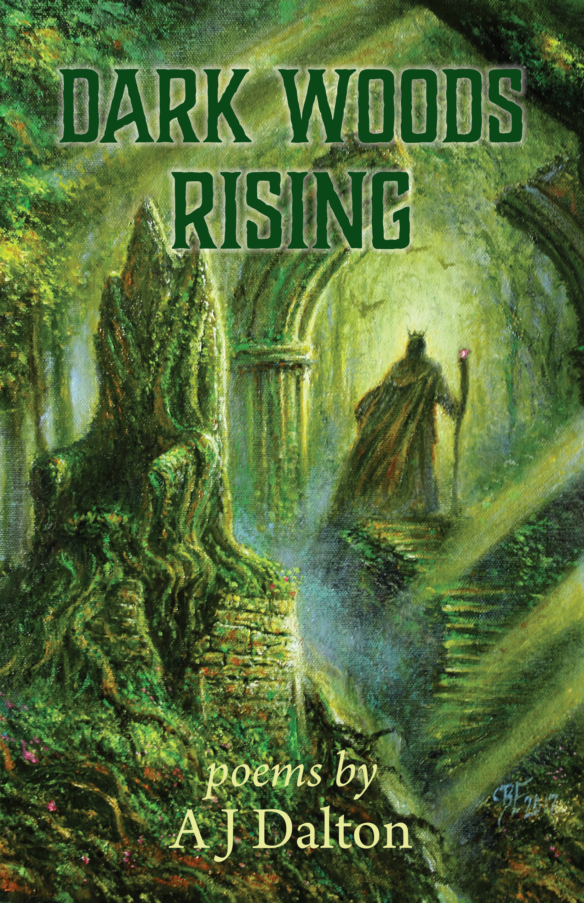
The always splendid cover art of Bob Eggleton completes the vibe magnificently.
A J wrote the bestselling series Chronicles of a Cosmic Warlord and the Flesh & Bone Trilogy. He is recognized as being the originator of the fantasy subgenre known as metaphysical fantasy.
The poems in this book are gloriously creepy and vividly Gothic, taking us on journeys both unexpected and haunting. A J’s poetry casts a weird light into the dark woods, where we glimpse the furtive truths of long-hidden realms, like the quick shine of lurking eyes.
Enjoy your sojourn in these pages, the poetry announcing that not all that is seen is understood, while less yet, is to be seen at all.Praise for Dark Woods Rising
“The denizens of dark places, the seldom seen and barely sensed are given shape and voice in this collection by A J Dalton. In these pages we find witches, demons, goblins, mages and trolls. The collection also contains glimpses of alternative histories and the dangers of space. The unsettling visions of the poet are sometimes combined with a touch of humour, making for an entertaining and beguiling read.” –Dr Penelope Cottier, Australian poet and author
“Who wouldn’t like a book of poems that turns loose enslaved goblins? Dark Woods Rising brings the hidden and unseen before us, where they can cast their finest spells, their longest shadows.” –Dr. Matt Schumacher, editor of Phantom Drift: A Journal of New Fabulism & author of The Fire Diaries: Poems
(10) MULTIPLE CELL LIFE. NPR provides “A look at a pilot program in Georgia that uses ‘jailbots’ to track inmates”.
…CHAMIAN CRUZ: In the Atlanta suburb of Cobb County, Sheriff Craig Owens says his three new assistants don’t have names yet, but they do know his.
AUTOMATED VOICE #1: Sheriff Owens, we meet again.
CRAIG OWENS: We sure do.
CRUZ = BYLINE: Owens is chatting with a tall wheeled robot resembling the metallic hero R2-D2 from “Star Wars.” It’s equipped with several 360-degree cameras, night vision, heat detection, and it talks. Owens says all three jailbots will take turns patrolling the jail to ensure inmates are where they’re supposed to be at all times.
OWENS: There’ll be no reason for concern. The robots will not really come in contact with them. It’ll be a mechanism, and it says, AI sentry robot on duty. Please stand back 20 feet, 30 feet. Do not touch….
(11) YOUR HISTORICAL RECORDS. “For those who celebrate” – “WKRP in Cincinnati Turkey Drop”.
[Thanks to Kathy Sullivan, Teddy Harvia, Mike Kennedy, Justin Sloane, Joey Eschrich, Dann, Andrew Porter, John King Tarpinian, Chris Barkley, Cat Eldridge, SF Concatenation’s Jonathan Cowie, and Steven French for some of these stories. Title credit belongs to File 770 contributing editor of the day Bonnie McDaniel.]

